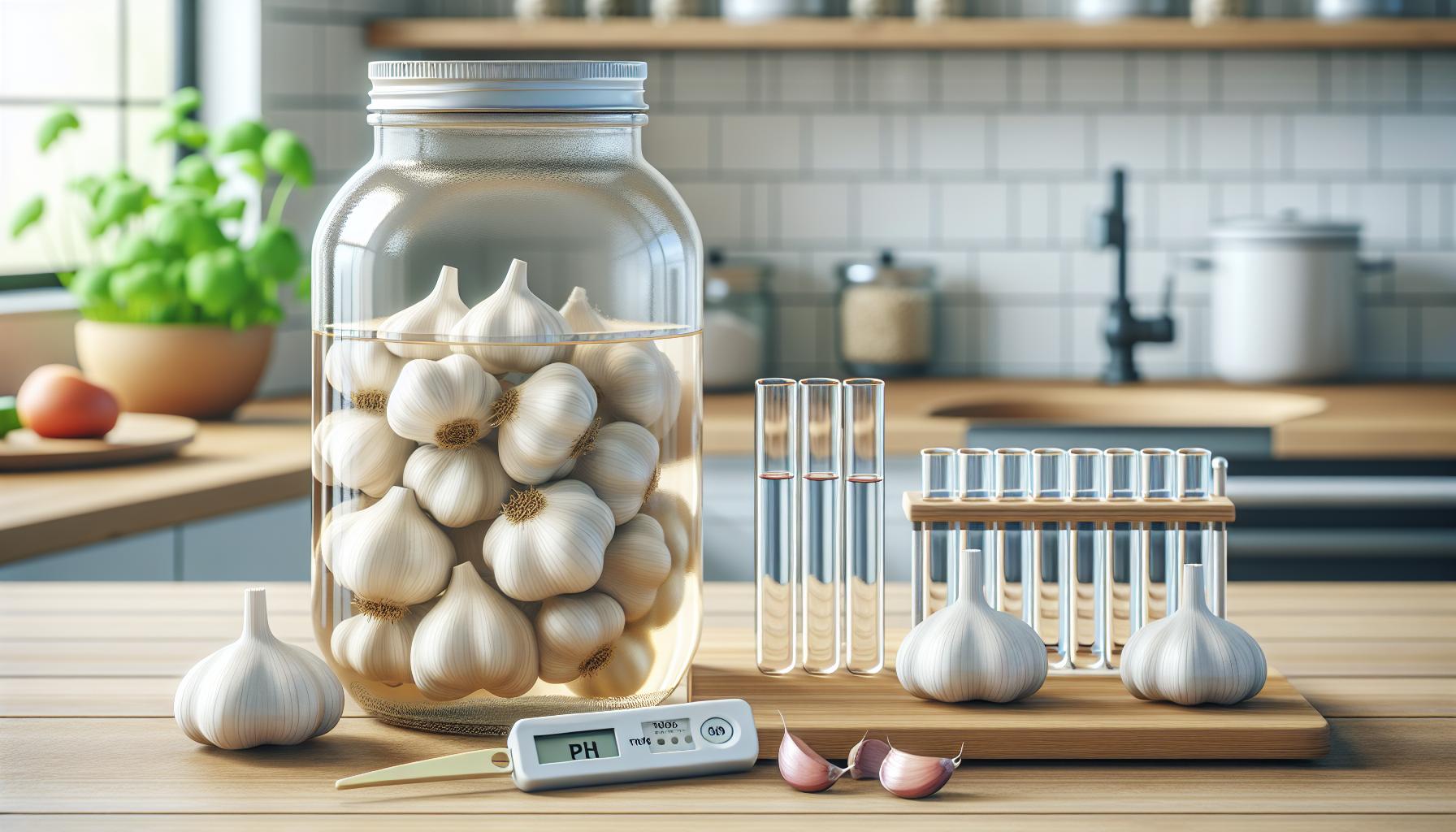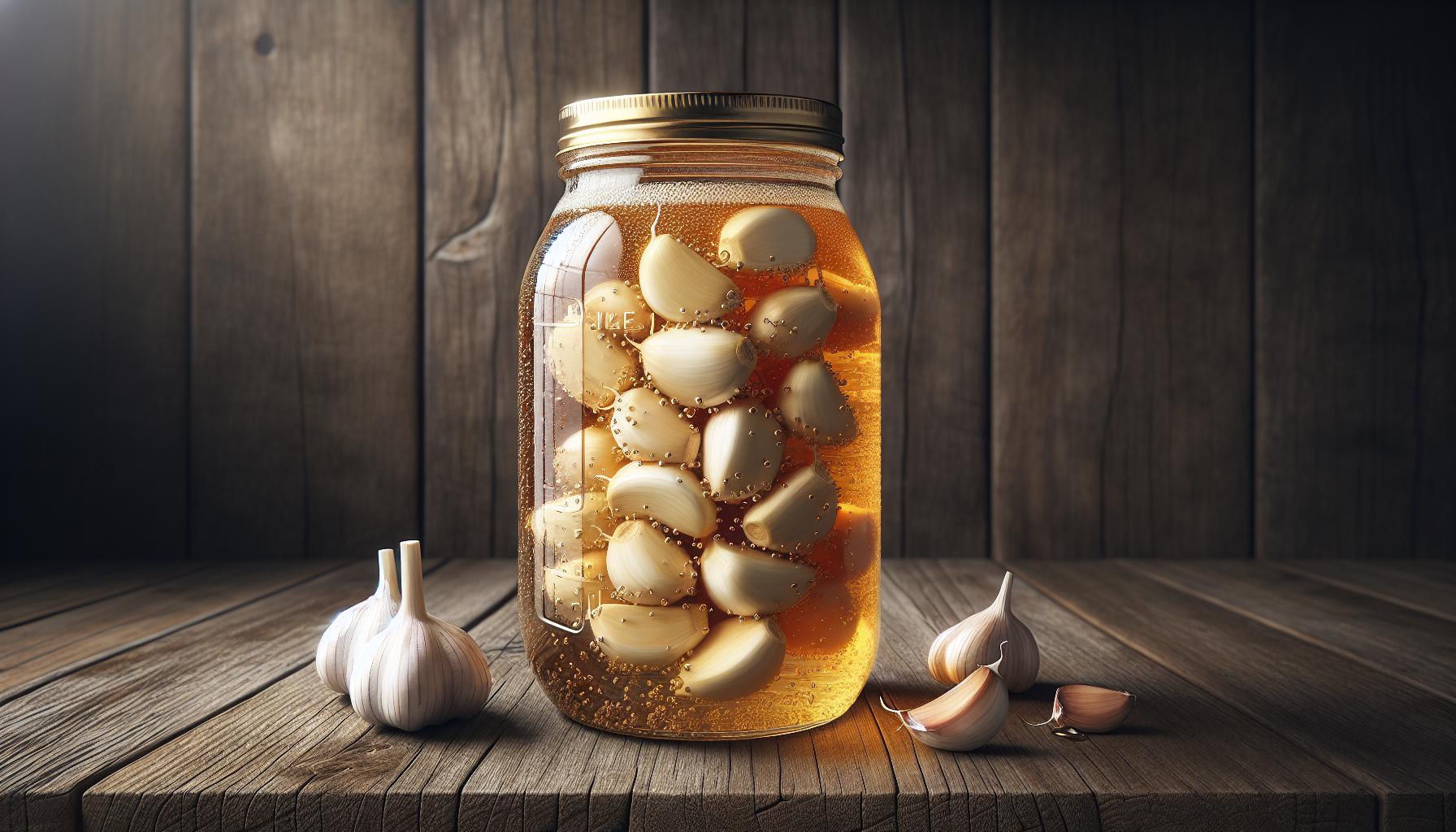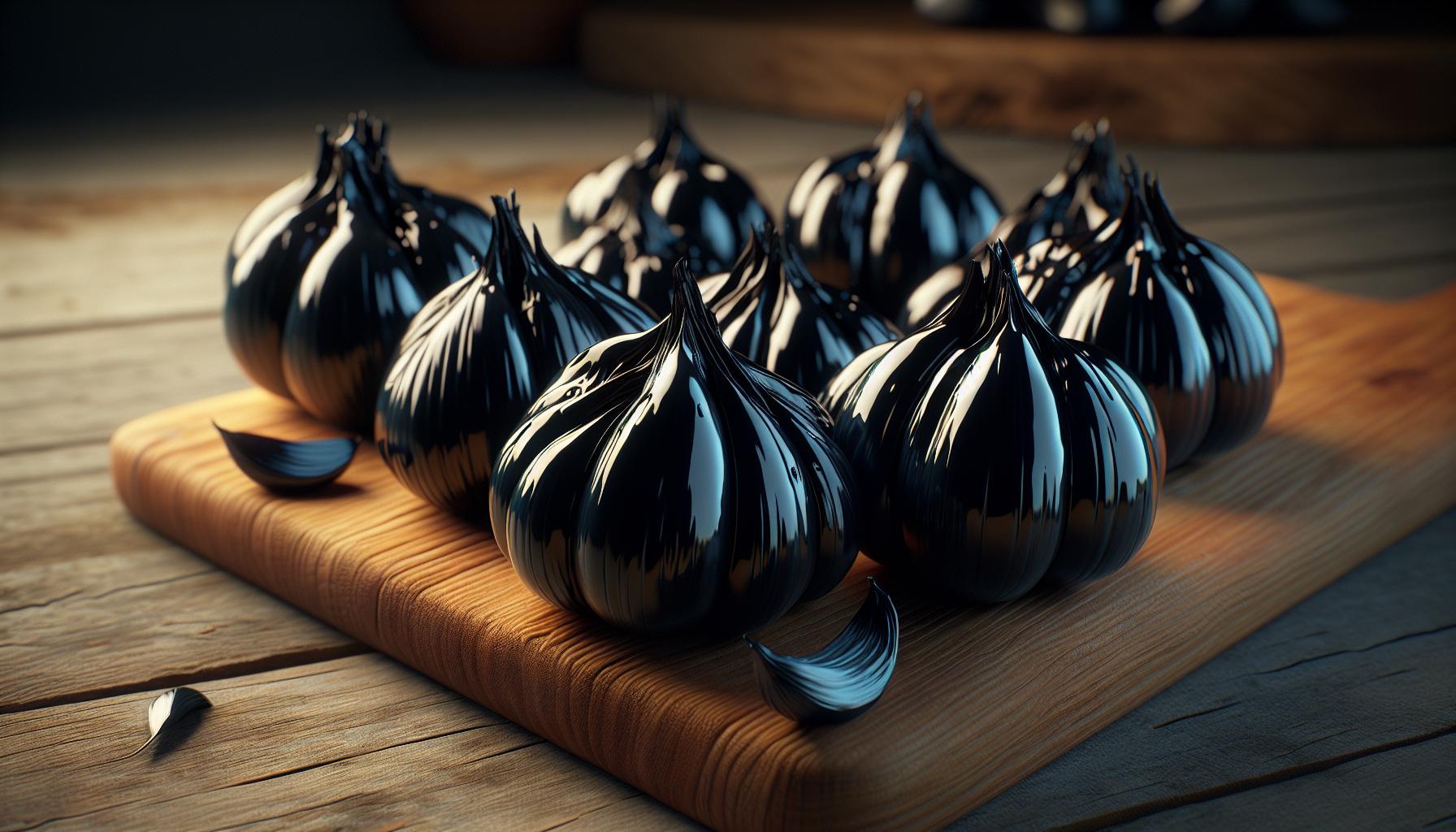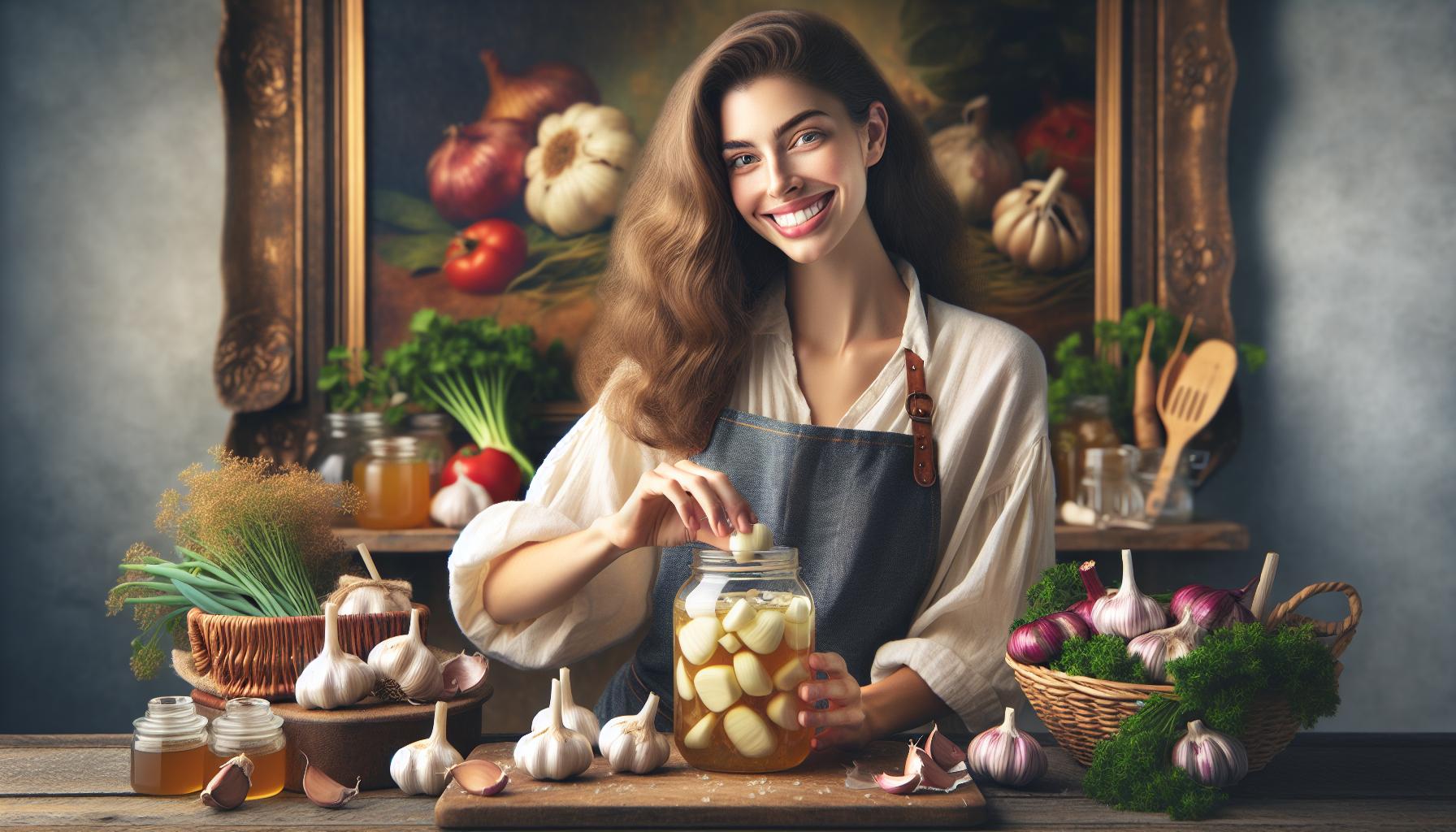Ever wondered how to transform ordinary garlic into a probiotic-rich superfood that packs a flavorful punch? Fermented garlic isn’t just another food trend – it’s a culinary game-changer that’s been around for centuries. This ancient preservation method enhances garlic’s natural health benefits while creating a mellow, complex taste that’ll make taste buds dance.
From honey-fermented garlic to spicy kimchi-style variations, there’s a whole world of possibilities waiting to be explored. These recipes don’t just produce delicious results – they’re also surprisingly simple to make at home. Whether someone’s a fermentation novice or a seasoned pro, they’ll find these garlic-based creations add an exciting dimension to their cooking repertoire.
Fermented Garlic Recipes
Fermented garlic transforms regular garlic cloves into a potent superfood through natural lacto-fermentation. This ancient preservation method amplifies garlic’s natural properties while creating new beneficial compounds.
Enhanced Flavor and Nutrients
Fermentation mellows garlic’s sharp bite into a complex sweet umami flavor profile. The process increases vitamin B6 content by 50% compared to raw garlic. Fermented garlic contains higher levels of S-allyl cysteine, a beneficial compound that’s 4 times more bioavailable than in fresh garlic. The fermentation process breaks down raw garlic’s complex compounds into easily absorbable nutrients, including:
- Increased mineral absorption from zinc, iron & selenium
- Enhanced antioxidant compounds like allicin
- Concentrated levels of organosulfur compounds
- Amplified prebiotic fiber content
- Preserved raw enzymatic activity
- Balanced blood pressure levels
- Enhanced immune system function
- Improved digestive health
- Regulated blood sugar response
- Increased cardiovascular protection
- Optimized nutrient absorption
- Strengthened gut barrier integrity
| Compound | Increase After Fermentation |
|---|---|
| S-allyl cysteine | 400% |
| Vitamin B6 | 50% |
| Antioxidant activity | 200% |
| Probiotic content | 1 billion+ CFU/gram |
Essential Equipment and Ingredients

Successful garlic fermentation requires specific tools and high-quality ingredients to ensure optimal results. Proper equipment selection combined with fresh ingredients creates the foundation for delicious fermented garlic preparations.
Fermentation Vessels and Tools
- Wide-mouth glass mason jars (32 oz) with plastic or glass lids prevent metallic contamination
- Glass fermentation weights keep garlic cloves submerged in brine
- Airlock lids or fermentation caps release excess pressure
- pH test strips monitor fermentation progress
- Clean cotton cloths or coffee filters secure jar openings
- Ceramic or glass bowls for ingredient preparation
- Wooden or bamboo spoons avoid reactive metal contact
- Fine-mesh strainer for rinsing ingredients
- Sharp knife for trimming garlic ends
- Glass measuring cups for precise brine ratios
- Fresh whole garlic bulbs with tight papery skins
- Organic varieties free from chemical treatments
- Local hardneck garlic offers robust flavors
- Firm cloves without soft spots or discoloration
- Large cloves simplify peeling preparation
- Spanish Roja garlic provides consistent fermentation
- Music variety garlic maintains texture during fermentation
- Elephant garlic creates milder fermented results
- Russian Red garlic delivers spicier outcomes
- California Early garlic offers reliable year-round availability
Classic Honey Fermented Garlic Recipe

Honey fermented garlic combines raw honey’s natural antimicrobial properties with garlic’s immune-boosting compounds. This traditional recipe creates a sweet, mellow garlic infusion that’s perfect for cooking or consuming straight from the jar.
Step-by-Step Instructions
- Peel 2-3 heads of fresh garlic cloves
- Place peeled cloves in a clean 16 oz glass mason jar
- Pour raw unpasteurized honey over the garlic until completely covered
- Leave 1 inch of headspace at the top of the jar
- Secure lid loosely to allow gases to escape
- Flip jar upside down daily for 30 days to ensure even coating
- “Burp” jar daily by opening lid briefly to release pressure
- Check for bubbles forming around garlic (signs of active fermentation)
- Monitor honey consistency as it becomes thinner
- Test pH level after 30 days (should be below 4.6)
Storage and Aging Tips
Store fermented garlic in a cool dark place at 60-65°F for optimal preservation. The garlic develops deeper flavors over 3-6 months when stored properly. Transfer to smaller containers as honey levels decrease to minimize air exposure. Check monthly for any unusual odors discoloration or mold growth. Refrigeration extends shelf life up to 12 months after initial fermentation. Label jars with start dates batch numbers pH readings. Remove floating garlic pieces immediately to prevent spoilage. The honey turns progressively darker amber as fermentation continues. Keep separate utensils designated for testing monitoring ferments.
Black Garlic Fermentation Method

Black garlic fermentation transforms fresh garlic into dark caramelized cloves through controlled temperature exposure over an extended period. This process creates complex flavors through the Maillard reaction between amino acids and reducing sugars.
Temperature and Time Control
Black garlic fermentation requires precise temperature regulation between 140-170°F (60-77°C) for 14-45 days. Set dedicated fermentation equipment such as rice cookers or specialized black garlic fermenters to maintain stable heat. Humidity levels stay at 85-95% throughout the process to prevent the garlic from drying out. Longer fermentation periods produce darker colors deeper flavors while shorter periods result in lighter shades milder tastes.
| Fermentation Duration | Temperature | Expected Results |
|---|---|---|
| 14-21 days | 140°F (60°C) | Light brown color mild taste |
| 28-35 days | 155°F (68°C) | Dark brown rich umami |
| 40-45 days | 170°F (77°C) | Black color intense sweetness |
- Exterior darkening from white to black
- Interior softening to spreadable paste
- Sticky surface texture development
- Sweet umami aroma emergence
- Reduction in size by 40-50%
Creative Fermented Garlic Recipes
Fermented garlic transforms into versatile ingredients that enhance various culinary creations. These recipes showcase innovative ways to incorporate fermented garlic into everyday cooking.
Fermented Garlic Hot Sauce
Fermented garlic hot sauce combines lacto-fermented garlic with chili peppers to create a complex spicy condiment. The process starts with peeled garlic cloves mixed with fresh chilies (habaneros, serranos, or jalapeños) in a 2% salt brine solution. Adding aromatics like ginger root slices carrots or onions creates depth. The mixture ferments for 14-21 days at room temperature until bubbling subsides. Blending the fermented ingredients with vinegar produces a smooth sauce with balanced heat acidity. The sauce develops unique flavor notes from allicin compounds in garlic combining with capsaicin from peppers during fermentation.
Garlic-Infused Vinegars
Garlic-infused vinegars feature fermented garlic cloves steeped in raw apple cider vinegar or rice wine vinegar. The infusion process takes 30 days in a dark cabinet at 65-75°F (18-24°C). Adding herbs like thyme rosemary or oregano creates distinct flavor profiles. The vinegar absorbs compounds from fermented garlic including enhanced allicin content sulfur compounds. Straining the finished vinegar through cheesecloth ensures clarity. These vinegars excel in salad dressings marinades sauces. The finished product maintains stability for 6 months when stored in sealed glass bottles away from direct light.
| Infusion Type | Fermentation Time | Storage Life |
|---|---|---|
| Hot Sauce | 14-21 days | 12 months |
| Vinegar | 30 days | 6 months |
Common Problems and Solutions
Fermented garlic presents specific challenges during preparation. Understanding common issues helps maintain quality control throughout the fermentation process.
Preventing Spoilage
Proper sanitation forms the foundation of successful garlic fermentation. Sterilize all equipment with boiling water before use. Keep garlic cloves fully submerged in brine or honey using fermentation weights to prevent mold growth. Monitor fermentation temperatures between 65-75°F (18-24°C) for optimal results. Check pH levels remain below 4.6 using test strips to ensure food safety. Store fermented garlic in airtight containers away from direct sunlight. Remove any floating particles from the surface during the first 5 days of fermentation. Look for signs of kahm yeast (white film) or mold (fuzzy growth) daily. Discard batches showing discoloration beyond normal fermentation changes or emitting strong unpleasant odors.
Troubleshooting Tips
A too-slow fermentation indicates insufficient ambient temperature or inactive cultures. Moving containers to a warmer spot accelerates the process. Soft or mushy cloves result from using old garlic or excessive fermentation time. Select fresh firm bulbs for optimal texture. Excessive pressure buildup releases by “burping” jars once daily. Dark spots on cloves indicate oxidation from air exposure. Press garlic deeper into the fermentation liquid. Bitter flavors develop from using reactive metal equipment. Switch to glass or ceramic containers. Cloudy brine appears normal during active fermentation. Sharp vinegar smells fade as fermentation completes. Green or blue garlic colors stem from copper content in water. Use filtered water to maintain consistent results.
Fermented garlic stands as a testament to the transformative power of traditional food preservation methods. Its ability to enhance both flavor and nutritional benefits makes it a valuable addition to any kitchen. From classic honey-fermented preparations to innovative hot sauce recipes the possibilities are endless.
Anyone can embark on this culinary adventure with simple equipment and quality ingredients. The key lies in patience attention to detail and following proper fermentation guidelines. Whether used as a spread condiment or cooking ingredient fermented garlic offers a delicious way to boost overall health while adding depth to countless dishes.

